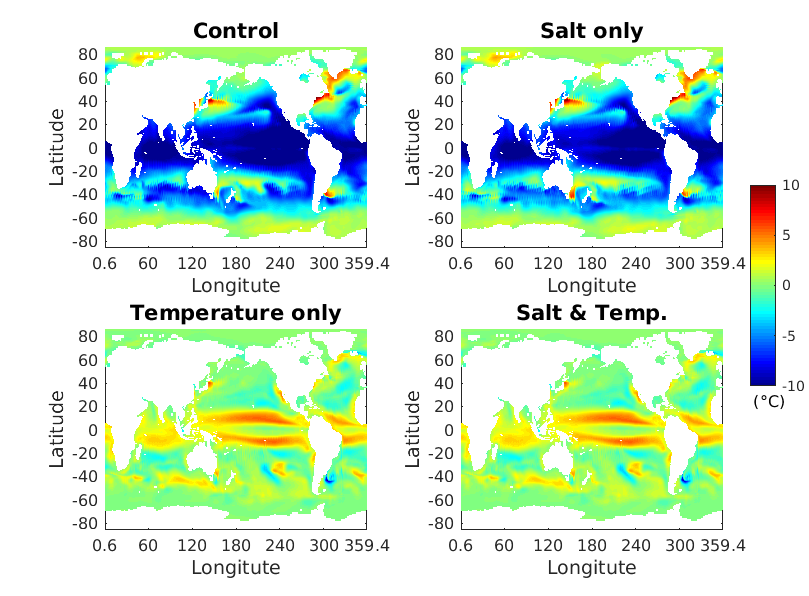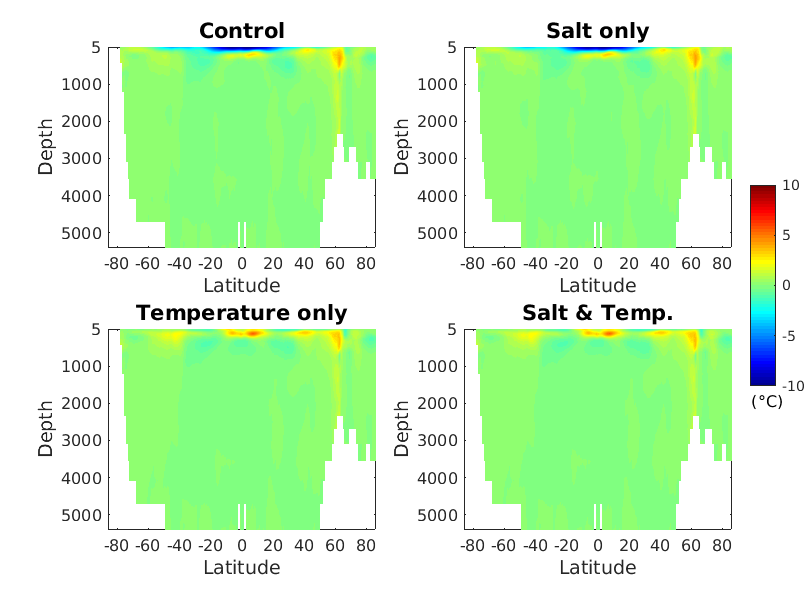Sensitivity test with `tau=365 days`
In this section, we covered some of the results regarding the restoring fluxes experiments, examining the effect of salinity and temperature fluxes seperately. The simulations only extend to ten years and were conducted with old versions of MUSOC, where the calender remain fixed 30 days each month. Also, the dot-lines represent the restoring forcing added to one iteration step only(`T_2` and `S_2`); solid lines mean the forcing is added to whole iteration steps (namely, `T_1,T_2,T_{lf}`, for example)
hmean nudging experiments
The hmean exps only include the hmean algorithm, called before entering the solver. The result shows that For volumetric weighting average of global temperature, the hmean algorithm does not affect the equilibrium time and it seems that our predicted temperature at high latitude is close to climatology, thus the adjustment remain small. Also, the temperature term tends to offset the effect of sanility adjustment. Namely , comparing to "salt only" exp, the adjustment of "Temp & Salt" exp is smaller.
As for the Salinity trend, however, the volumetric weighting average of global salinity is sensitive to salinity adjustment, but the temperature term does not affect the average trend much, indicated in the trend of"Salt only" and "Temp & Salt" experiments. The results also imply that our simulated salinity at high latitude has larger bias than temperature, comparing to climatology.
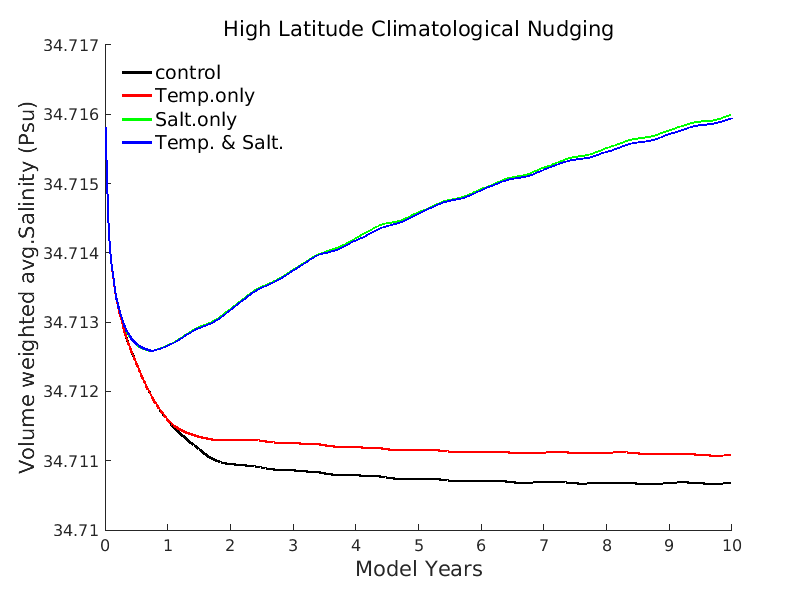
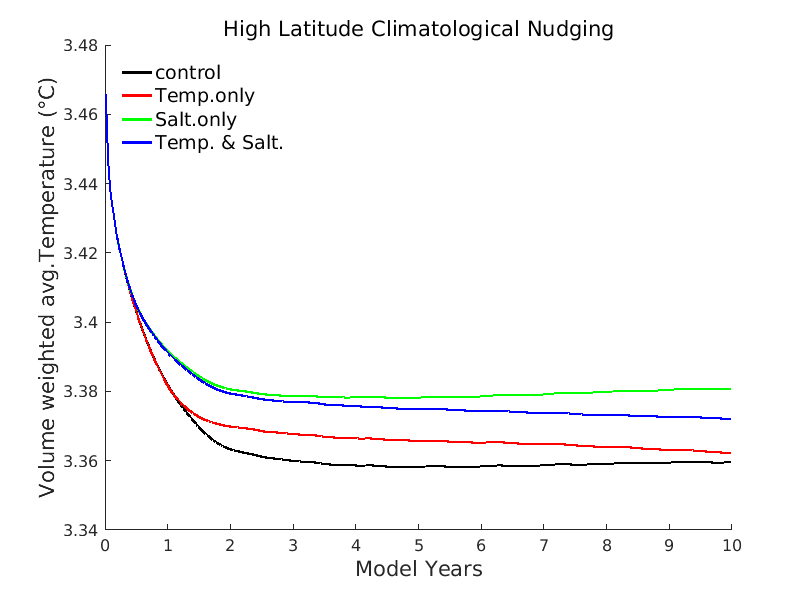
Restoring fluxes experiments
In restoring fluxes simulations, firstly we add the forcing term with "one iteration variable" or "three iteration variables (ie: `T_2, S_2` versus `T_1, T_2, T_{lf} ; S_1, S_2, S_{lf}`). The result indicates that the responses are larger with three iteration variables being added with restoring fluxes, yet the general adjustment behavior remain the same. Further examine the volumetric weighting average of global temperature, we find that the global temperature is sensitive to restoring heat flux, but not much for fresh water flux as indicated in "Temp only" and "Temp & Salt" simulations. On the other hand, the volumetric weighting average of global salinity is far more stable than global temperature. This means the model with added fresh water flux have reached the equilibrium. Also, the effect of freshwater flux on global salinity tends to cancel out by heat flux, shown by the "Salt only", "Temp only", and "Temp & Salt" simulations.
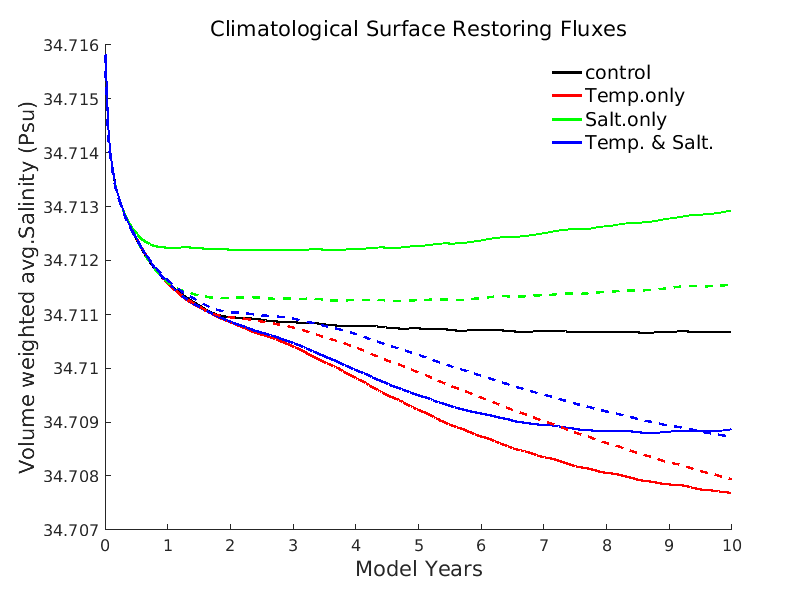
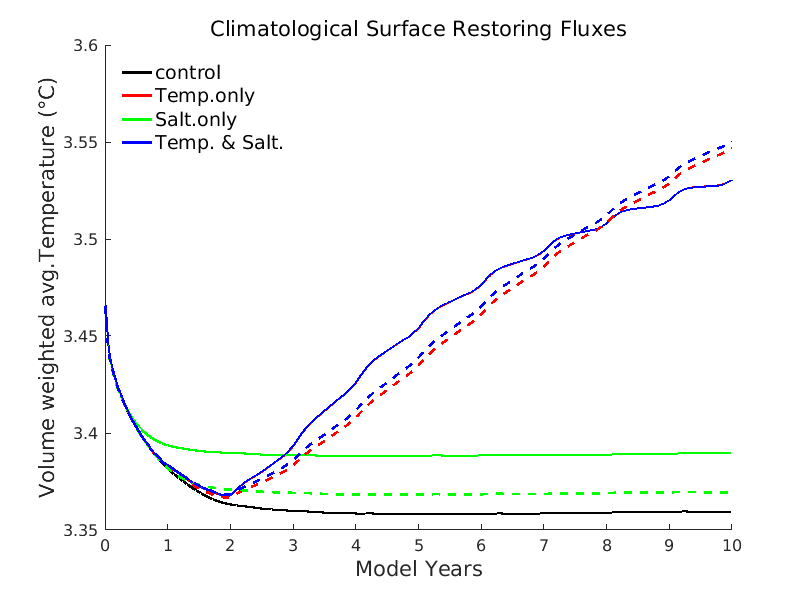
Lastly, we examine the global distribution of temperature and salinity anomalies. Figures below are plotted with last two years annual mean subtracted with annual climatology. The left penal shows global snap shots whereas the right penal presents the zonal mean anomalies.
For salinity, the experiments show that the restoring fluxes algorithm does not have significant influence on salinity; yet this may due to the smaller `tau` and the model internal dynamics. For "Salt only" simulation, it does closing the gap between model state and climatology.
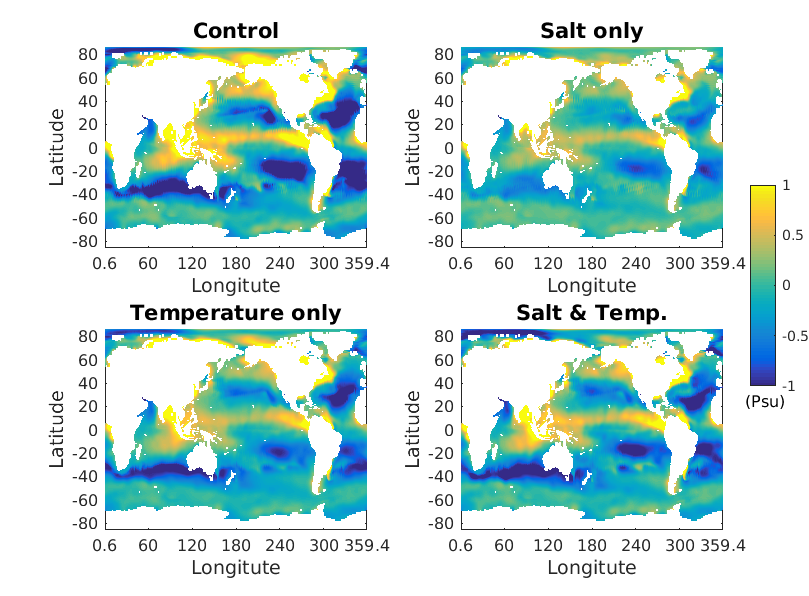
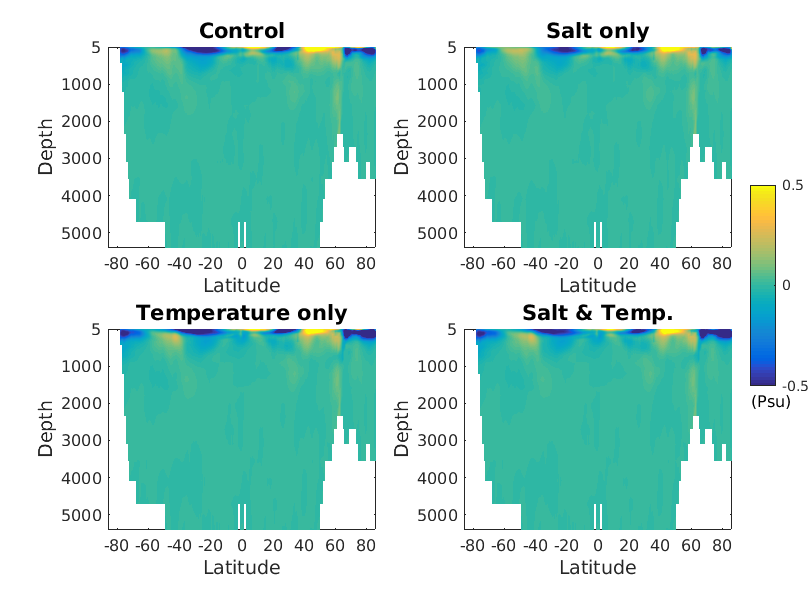
Different from salinity results, the restoring fluxes algorithm change the temperature trend significantly, mostly within the mid-latitude and tropics.
